Grupo 5/Group 5. Anna, Claire, Naida, Jade
Chamela is H-O-T-T-O-G-O Buenas noches from Anna, Naida, Claire and Jade!
Many of us are struggling to acclimate to the heat here at Chamela (and is the ‘cool season, only attaining daytime temperatures of low 30s), but our projects are underway!
The main task today has been collecting pilot data for our research projects so we can refine our hypotheses and design feasible studies. Groups ventured out into the brush to get some preliminary data. After spending the morning collecting pilot data, we took some time mid-day before lunch to research with the Spanish books, reports and articles available in the air-conditioned library. Some of us also had a little siesta since we were feeling a bit fatigued after having spent a few hours in the hot sun. After a morning of fieldwork, we had lunch which consisted of chicken and rice with hibiscus juice! After lunch, we made our way to the classroom to present our hypotheses and receive (and provide) constructive feedback to each group as a class. Groups then headed in separate directions to incorporate feedback, develop their methods, and collect more data. Different groups spent their day looking for lizards, playing bird calls and gaging response, evaluating herbivory and spine abundance in cacti, and assessing tree width and leaf morphology. Group 4 was lucky enough to spot some wild pigs while trekking through the field.
For dinner, we had tasty tacos and of course more hibiscus juice. Then, we did three species presentations in the courtyard—we learned about the Black Vulture, the White-Nosed Coati, and the Mexican Red Legged Tarantula—all of which we’ve seen here this week.
That’s all for today! Hasta luego
Español
¡Chamela está CALIENTE! ¡Buenas noches de parte de Anna, Naida, Claire y Jade!
A muchos nos cuesta aclimatarnos al calor aquí en Chamela (y es la temporada de frío, donde solo se alcanzan temperaturas diurnas casi de 30 °C), ¡pero nuestros proyectos están en marcha!
La tarea principal de hoy ha sido recopilar datos piloto para nuestros proyectos de investigación, de modo que podamos refinar nuestras hipótesis y diseñar estudios factibles. Los grupos se aventuraron entre la selva para obtener datos preliminares. Tras pasar la mañana recopilando datos piloto, dedicamos un tiempo al mediodía, antes del almuerzo, para investigar en libros, informes y artículos en español disponibles en la biblioteca climatizada. Algunos también echamos una siesta, ya que nos sentíamos un poco cansados tras haber pasado unas horas bajo el sol. Tras una mañana de trabajo de campo, ¡almorzamos pollo con arroz y agua de jamaica! Después del almuerzo, nos dirigimos al aula para presentar nuestras hipótesis y recibir (y proporcionar) retroalimentación constructiva a cada equipo de trabajo. Posteriormente, los equipos nos separamos para incorporar la retroalimentación, desarrollar métodos y recopilar más datos. Los diferentes equipos dedicaron el día a buscar lagartijas, reproducir cantos de pájaros y medir la respuesta, evaluar la herbivoría y la abundancia de espinas en cactus, y evaluar el ancho de los árboles y la morfología de las hojas. El equipo 4 tuvo la suerte de avistar pecaríes mientras caminaba por la selva.
Para cenar, comimos unos ricos tacos y, por supuesto, más agua de jamaica. Después, hicimos presentaciones sobre tres especies en el patio: aprendimos sobre el zopilote negro, el coatí de nariz blanca y la tarántula mexicana de patas rojas, todas ellas que hemos visto aquí esta semana.
¡Eso es todo por hoy! Hasta luego.
- twins!
- Jade, Claire, Naida, and Ddilini on the main road
- Bethany obscured by the bush
- In the air-conditioned classroom
- Elyse, Aymre and Bailey presenting their hypothesis on moisture gradients and habitat structure
- Claire with her most favoritest cactus
- Bailey working on research project
- Javier and Dilini on the trail
- Ciara, Alexia, and Mica Mae measuring leaves
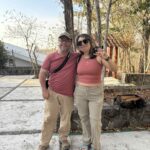
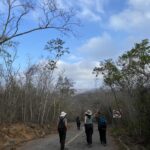
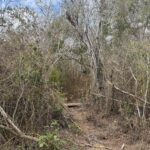
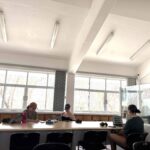
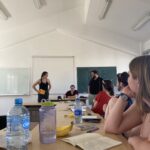
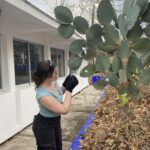
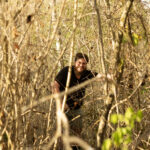
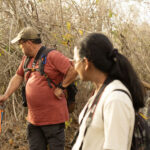

Leave a Reply